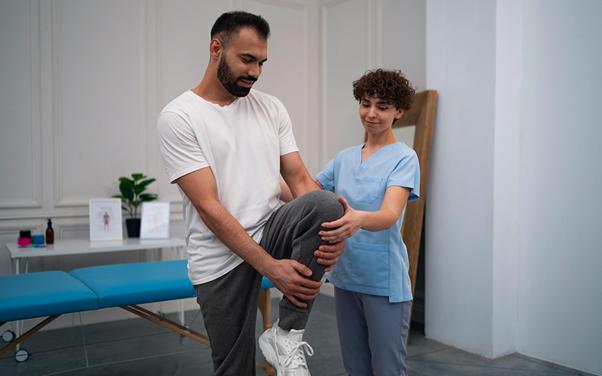
The Beginner’s Guide to Physiotherapy in Singapore
Sometimes, recovery feels like an uphill climb. You might be unsure where to start or afraid of making the pain worse by moving too much. Before you give up, know that structured help exists and it’s designed for this exact challenge. That’s where physiotherapy in Singapore comes in. It blends professional techniques with realistic routines that help the body heal, strengthen, and adapt at its own pace. Let’s explore how you can make it truly work for you.
Start with a Clear Understanding of Your Body
Before you dive into treatment, it’s crucial to know what’s actually happening beneath the surface. Physiotherapy isn’t just about stretching and massages. It’s a science of understanding how your muscles, joints, and nerves work together.
When you visit a physiotherapist, expect a comprehensive assessment that identifies movement imbalances and postural habits that may be hindering your progress. This foundation matters because pain doesn’t always stem from where you feel it. For example, a weak hip can slowly contribute to knee discomfort. By identifying these links early, your recovery becomes far more precise and effective.
Before worrying about which exercise to start with, learn to recognise what your body is trying to tell you. It’s the first step towards building strength without unnecessary strain.
Rebuild Strength through Simple, Consistent Actions
Recovery isn’t instant. It’s built from small, consistent movements that teach your muscles to support you again. This is where structure meets patience. Your physiotherapist will usually introduce a gradual plan, starting from low-impact exercises like resistance band work or supported squats, moving towards more demanding routines over time.
If you’re dealing with knee pain physiotherapy, expect the focus to be on controlled strengthening. The idea is to stabilise the surrounding muscles, reduce swelling, and rebuild mobility without pushing the joint too far. The trick is to find the sweet spot between comfort and challenge. Consistency matters more than intensity.
At home, simple routines such as gentle step-ups or isometric holds can reinforce what you learn in your sessions. The goal isn’t perfection, it’s progress you can sustain daily.
Incorporate Mobility into Your Everyday Life
A good physiotherapy plan doesn’t end when you leave the clinic. The real transformation happens in the hours you spend outside it. Start looking at movement as part of your daily rhythm instead of a separate appointment on your calendar.
For example, if your physiotherapist recommends light walking or dynamic stretches, treat these as part of your commute or lunch break. Adjust your workstation height, stretch throughout long meetings, or alternate between prolonged sitting and easy standing every hour. These habits reduce stiffness and train your body to maintain alignment without conscious effort.
The same approach applies when dealing with joint or knee discomfort. Applying what you’ve learned from knee pain physiotherapy in real-life movements, like climbing stairs more mindfully or adjusting your balance while standing, reinforces healing through everyday practice.
Don’t Skip Recovery and Rest
It’s easy to think recovery equals inactivity, but that’s not the case. Active rest plays a big role in successful physiotherapy. Your body rebuilds tissue and strengthens neural pathways during downtime, so skipping rest days can backfire.
Rest doesn’t mean you stop moving entirely. It means giving your muscles the chance to absorb the work you’ve done. Gentle stretching, proper hydration, and balanced nutrition support this process. When in doubt, discuss pacing with your physiotherapist, they’ll know when to push and when to pause.
Physiotherapy in Singapore often integrates recovery education into its programmes because sustainable progress depends on more than exercise alone. Mindful rest is part of the formula that keeps your results lasting.
Stay Consistent Even After the Pain Subsides
Once the discomfort fades, many people make the mistake of returning to old habits. That’s when relapse happens. Physiotherapy works best as an ongoing partnership between body awareness and lifestyle choices.
Keep attending your follow-ups, track small improvements, and continue with mobility routines even when you feel fine. Prevention is quieter but far more powerful than repair.
When physiotherapy becomes part of how you live (rather than something you “finish”) you’ll notice steadier posture, smoother movement, and a stronger sense of control over your health.
Physiotherapy is less about quick fixes and more about understanding how your body can rebuild itself with the right support. By assessing your body, strengthening with intention, maintaining mobility, and giving recovery its due time, you create a sustainable path towards better movement and long-term comfort.
If pain or stiffness has been slowing you down, consider how targeted physiotherapy in Singapore can make recovery feel more manageable and purposeful.
Contact The Movement Laboratory to book your session and start moving towards real recovery today.
- Why a Massage Spa in Singapore Is More Than Just a Luxury Experience - November 4, 2025
- Why Dental Pain Happens and How a Family Dentist Can Help - November 4, 2025
- The Beginner’s Guide to Physiotherapy in Singapore - November 4, 2025
